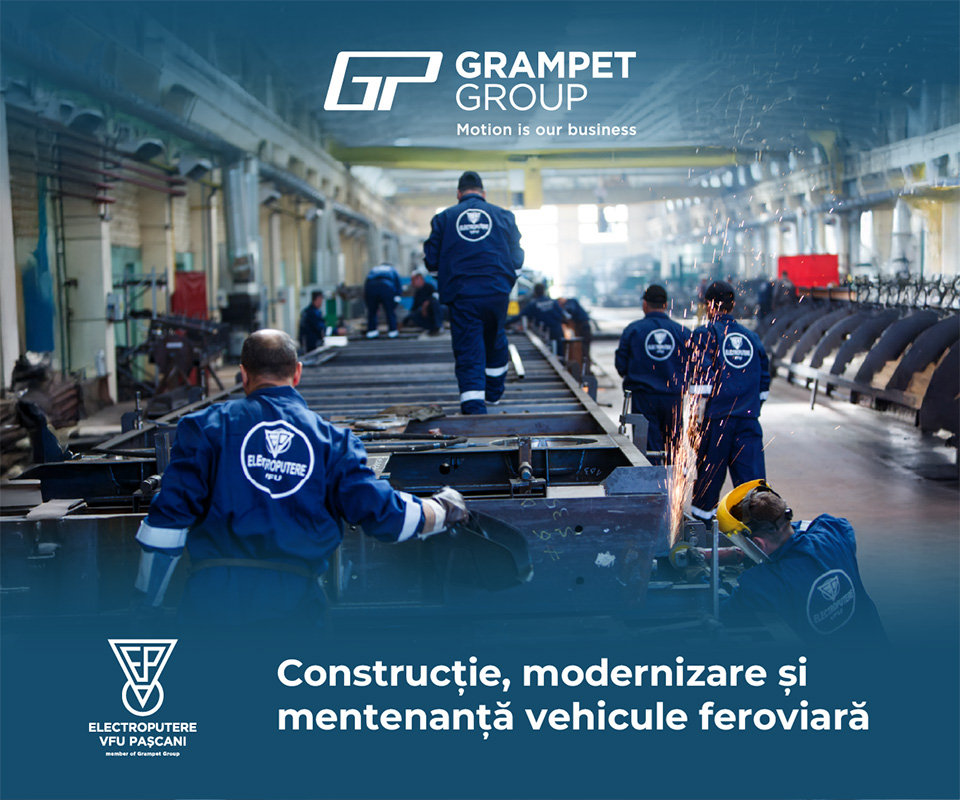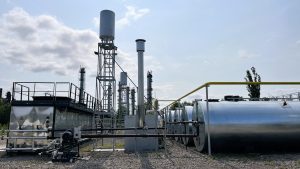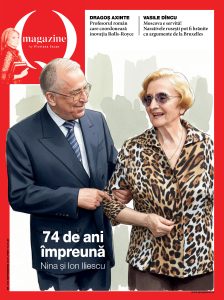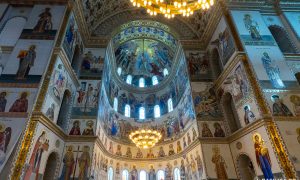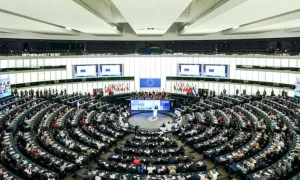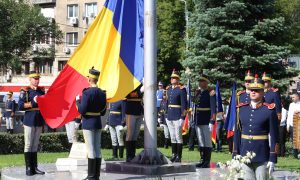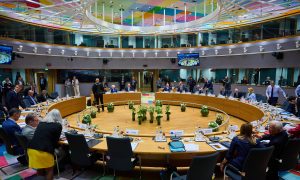It is well known that Russians are bothered by the fact that they do not possess important assets in the Romanian energy sector. This is one of the main reasons why Romanians pay a much bigger price than the European average for the natural gas, claim the Russians. In addition, it is also simple to understand that an excessive over-taxation of the Romanian energy sector leads to lower investments and will generate the decrease of domestic production and, consequently, of the total revenues to the state budget, all to the Russians’ satisfaction who will hence have more energy to sell to the Romanian consumers, at prices set accordingly. Besides the Moscow’s dissatisfaction, in order to truly understand the advantages and disadvantages of Petrom’s privatization we must try and transport ourselves back in time and search in our memory. While searching the website of the Deputies’ Chamber, I found a motion entitled “The Oil Mafia”, which was debated in the Romanian Parliament before Petrom’s privatization.
Frauds and huge losses before privatization
On that occasion, the current PNL president – Crin Antonescu – was making quite an accurate description of the Romanian crude sector up to Petrom’s privatization, by stating in the Parliament’s session: “In 2002 the illegal operations in the oil industry amounted to the total incredible sum of USD 600 mn”. Politicians and business men, mostly coming from Ceausescu’s security have “milked” hundreds of millions of dollars from Petrom before its privatization. Tens of wholesale contracts for fuel supply have never been honored that is the volumes were taken but the payments were not made; deceiving the state budget by failure to pay excises was common practice at those times, filling stations built by highly ranked people were forcibly sold (for example the case of senator Mocanu that was covered by the media), building houses that the company was forced to buy (see the famous case Rodica Stănoiu) were also a common practice. All these ways to mess with Petrom’s money caused large financial losses to the company and seriously affected the state budget revenues in the years prior to privatization.
The Năstase Government and the Parliament took the right decision
There would have been two solutions at hand: bringing a professional management or privatization. A professional management, as interesting as a concept might seem, is difficult to apply in Romania, unfortunately. There is no success management story regarding the state owned companies, the last examples – Oltchim şi Hidroelectrica – being extremely obvious. Upon the pressures of international financial bodies, the Nastase Government chose the solution of privatization, by organizing an international open bidding, characterized by a “complete transparency” as stated by the former minister of finances Mihai Tănăsescu during the debate of the motion “The Oil Mafia”. The finalists were: the Hungarian company MOL, the American one Occidental Petroleum and the Austrian OMV. The privatization contract of Petrom was discussed and approved by the Parliament almost with unanimous votes (except for Romania Mare Party). The decision did not belong exclusively to Adrian Nastase or PSD, it was a solution chosen by the Romanian political class in its totality, under the obvious impact of the frauds existing in Petrom prior to its privatization which time erased from our memory.
Romania, returned on the world map of crude sector
One of the most controversial provisions of the privatization contract was related to the freezing of royalties percentage (up to 13.5%) which were established by the Romanian state not only for a certain buyer but a few years prior to privatization, taking into account the alignment to the European legislation as well as the huge need for investments to stabilize the 100 year old crude exploitation. The Năstase Government did not negotiate with OMV (the bid winner) the royalties and taxes level, but only a period of fiscal stability of the existent system, a natural thing in an industry in which the investments cycle is very long. A frequent confusion of the public opinion is related to freezing of the percentage and the amounts cashed in from royalties, amounts that increased each year in line with the increase of oil quotations. Was Petrom’s privatization a success or a failure of the Romanian state, governed by Adrian Nastase at that time? If we look at the fact that after the privatization the company invested more than EUR 8 bn (almost 95% of the realized operational profit), that there is not a single day of delay in tax payments to the state (each year, almost 11% of Romania’s state budget; the income tax and dividends in 2011 only amounted to approx. EUR 250 mn), that the oil and gas production was stabilized, that new discoveries were made, that significant investments were made (see the recently inaugurated gas fired power plant from Brazi – over EUR 500 mn), that it placed again the Romanian oil sector on the world map by entering partnerships with big international players – ExxonMobil, Hunt Oil, Petrosantander, Petrofac, etc – we would be tempted to say that the privatization was a big success.
Fundamental role of Petrom in the economic recovery
An intensely debated problem is however the price paid by the buyer of 51% of the shares (approx. EUR 1.5 bn of which 900 mn brought in the company). Many say it was “low”. If we look however at the evolution of the Petrom shares and the market capitalization of the company in 2004, at privatization being EUR 3 bn, and now standing at around EUR 5 bn, we can have some doubts in saying that the price obtained was “low”. Each of us can value Petrom at billions of Euro but, in the end, the correct price is the one offered by the market. The Boc Government valued Petrom at EUR 4.5 bn and failed to sell 10% of the company. After years of investments, after the black holes were eliminated, after the oil price reached 100 USD/barrel, any person can buy Petrom shares from the stock exchange at a price not even double the one paid by OMV in 2004. As a comparison, a single room flat in a central area (Vitan Mall, for instance) cost in 2004 around 10,000 USD, the current price being somewhere around 45,000 EUR, meaning 5 times as much, compared to Petrom shares which increased at most two fold in these 8 years.
The privatization also had negative effects. For instance, the necessary restructuring lead to jobs being lost. I think however that a serious and balanced analysis cannot help but notice the economic effects produced by Petrom before and after the privatization, especially regarding the revenues to the state budget and the fundamental role played in the economic recovery of Romania. The Nastase Government proposed the Parliament a correct and positive solution for Romania. He paid politically for this decision but the real political people have the courage to take important decisions for the welfare of the country and not to remain popular. Deputy Antal Istvan anticipated best the current public discourse on Petrom with the occasion of the motion on May 4th 2004, a few months before the closing of the company’s privatization process: “everyone, in the widest possible sense, is looking to Petrom today and waits to see how the Government will succeed in this regard. But, probably, no matter how this process will be finalized, there will be enough voices that will blame and criticize the results obtained, which is happening, actually, in the motion we are debating today.”
Crin Antonescu’s analysis before the privatization
“In the conditions of the crumbling of the National Oil Company, entities appeared then proved not to be economically viable. They became companies in their own right refineries without distribution networks, petrochemical capacities insufficiently powerful to survive on their own, natural resources were concentrated into monopolies, with the risk of destroying the competition forces of the market. Another consequence was, of course, the accumulation of historical debt to the state and other economic players, because of state management, debts to which penalties and interest was continuously added. The situation was never, sadly, coherently analyzed, for a global solution to the system’s problems, all the more severe as a part of the oil industry remained state owned and another was privatized. This uncertain state created an unlimited field for media speculation and for scandals, theft, oil products counterfeiting and contraband. In 2002, illegal operations in the oil industry totaled the incredible figure of over USD 600 mn, decreasing, in 2003, thanks to the implementation of European provisions in the field, to around half, immensely anyways if we consider the fact that 20% of the total oil products sold are counterfeit or contraband.”
Mihai Tănăsescu in 2004: “The essential aim, strengthening Petrom”
Finance Minister, Mihai Tanasescu, with the occasion of the debate of the motion “The Oil Mafia”, in 2004, presented to the Parliament the strategy that the Nastase Government had in view of stopping the fraud and waste in the oil system. “The accusation on the current Government that is lacking transparency in the privatization process of the National Company PETROM, is lacking in grounds, because the documents and privatization procedures of this national company are subsumed to the privatization strategy adopted following the consultancy given by an international company, whose activity is beyond any suspicion”, said the minister. “The privatization strategy was approved by the Romanian Government, with the essential aim to ensure the strengthening of the company after the privatization, by consolidating the base structures of the company and the role it plays nationally and regionally”, said Mihai Tanasescu, and the analysis of what happened since proves that the decision to privatize with OMV was the best solution for Romania.

